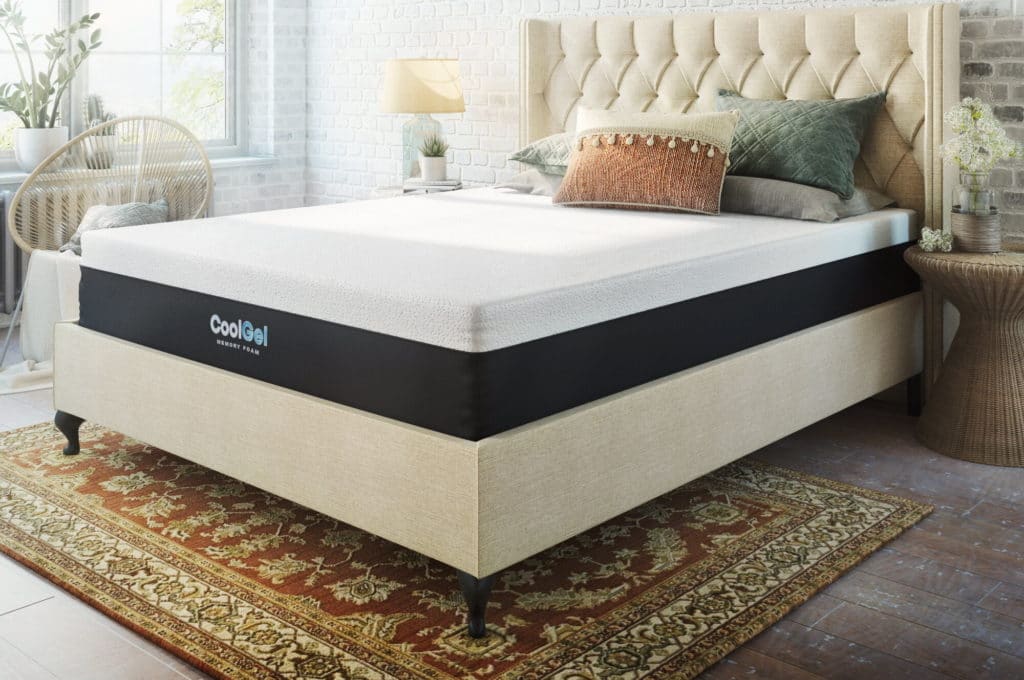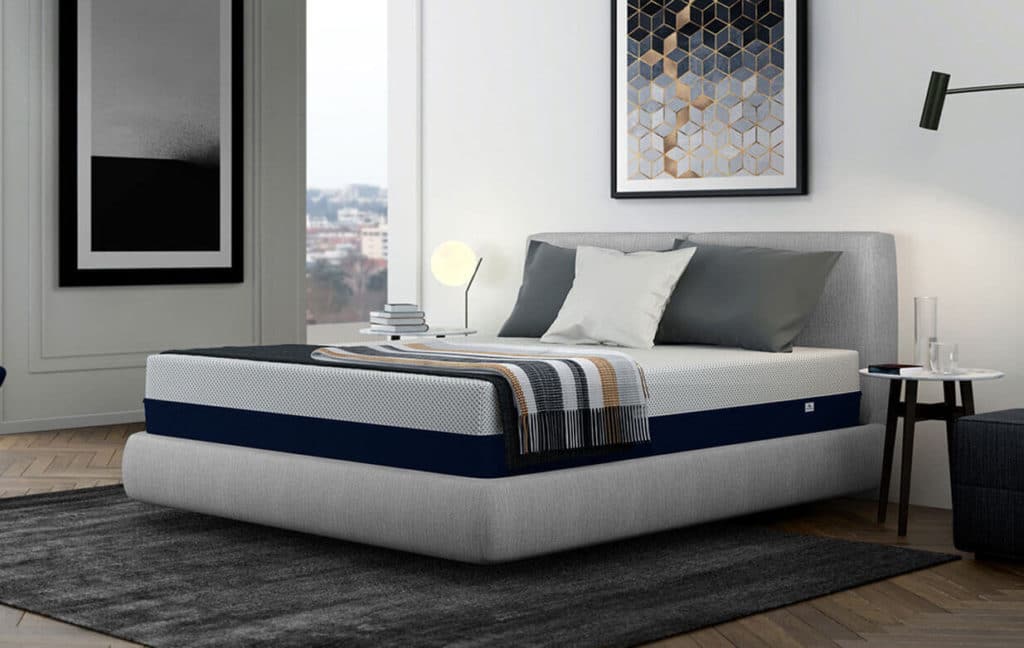

Mattresses come in varied degrees of firmness to support a broad variety of sleeping positions and individual body weight. A firm one prevents lower back pain and supports heavy individuals without excessive sinkage. However, sometimes the mattress maybe too firm and cause pressure points, numb limbs and body aches instead. In such cases, you need to learn how to make a mattress softer to provide support as well as comfort.
Turning over a mattress is one way to prevent body impressions and uneven firmness. Since a new mattress may feel initially firm, give it some time to decompress and expand to its full size before you consider replacing it. Some sellers allow buyers a specified trial period to get a feel of the mattress before making a decision but if you are stuck with yours, then our article will guide you on how to make a mattress softer by using these tips.
Since mattresses are compatible with different types of bed bases, your mattress may feel firmer than expected if it is not properly supported by a suitable foundation. For instance, innerspring and traditional mattresses can be softened by using them on a box spring instead of a slat or platform base. Box spring foundations serve as motion isolators for the bouncy coils. However, they are not compatible with memory foam and latex mattresses which are better paired with an adjustable base or a platform foundation. Slats for foam mattresses should not be positioned unevenly or more than 3 inches apart, and large mattresses like king and queen size should have center bars for extra support. The gaps in slatted frames allow for increased airflow which protects you from night sweats and prevents mold from growing under the mattress.
Using the right foundation can help make a hard mattress softer, but using the wrong one may deform your mattress and void your sleep trial and warranty.
If you are using a double-sided mattress that still feels firm after several uses, try rotating it to 180 degrees and then flip it over. This way, the upper side of the mattress that was supporting the head will now be switched to support your feet. One-sided mattresses can only be rotated, but you could get a mattress with soft and firm sides that can be alternated by flipping it.
Flipping a mattress at least twice every year promotes even wear and prevents sagging and indentations resulting from overuse. Excessive sagging and body impressions that are deeper than 1.5 inches are a sign of a defective mattress, and are typically covered by the warranty. Rotate-and-flip technique does not apply to pillow tops that cannot be flipped.
One of the most effective and affordable ways you can make a firm mattress softer is by investing in a topper. Toppers are made from cotton, latex, wool, memory foam, and feather such as goose down. They come in varied density and thickness to mold to your body shape and ease pressure points. Some are designed to add firmness while others are for softening. Wool, goose down or a 2-inch thick memory foam topper layered on the mattress will make the sleeping surface feel soft so you won’t have to replace the foundation or mattress. Avoid Dunlop latex toppers which are used to increase firmness. For just a little padding, consider the thinner mattress pads. Check whether the pads are designed for heating or cooling since both options are available. It is also advisable to have a protector to shield your mattress from dirt and spillage.
When you first receive a new mattress, you will likely find it stiffer than expected. Most mattresses, particularly those shipped compressed in a box, need some time to break in and soften. Typically, manufacturers recommend allowing for up to 48 hours before initial use, and then sleeping on the mattress for a minimum of 60 nights for maximum expansion. You can speed up this process and make a firm mattress softer by walking or rolling daily across the mattress for at least 10 minutes. Other users suggest applying gentle pressure by kneeling or pushing your palms on the areas that remain firm to relax the fibers for expansion. Avoid jumping since it could damage the structure and create permanent indentations.
The rate of expansion will depend on the materials used to make the mattress, your own body shape and weight, your dominant sleeping position, and in case of memory foam, your body heat and the ambient heat. We have explained below how to make a hard mattress softer if it is the type to respond to heat.
Some temperature-sensitive mattresses such as airy polyfoam and memory foam soften over time to conform to your body curves as they respond to pressure and heat. This includes body heat and the bedroom’s temperature. You can warm your mattress by adjusting the thermostat to approximately 66 degrees Fahrenheit or by adding cozy flannel sheets. You may also use a heated mattress pad or blanket to increase ambient temperature for the mattress to decompress fully.
Most mattresses come with a trial period ranging from 60 to 100 nights, and a few may allow you to extend this period to up to a year. If you have unsuccessfully tried to make your hard mattress softer and it has developed deep impressions or proved to be defective, you can return it for refund or replacement if it’s still within the trial period or under warranty. Some companies will even help you to ship it back. Familiarize yourself with the terms and conditions governing your purchase to secure your mattress against unforeseen damage.
If all else fail, it might be time for a new mattress with the right level of firmness for your body type and sleeping position. Manufacturers usually indicate the firmness level of their mattresses in product descriptions or seller’s website.
If you are a side sleeper, look for a plush and soft model that conforms to your shape and absorbs weight to ease pressure on arms, shoulders and hips. You could also add a soft and cozy topper. A feather mattress topper is probably the plushest option of all other types of toppers available. This extra-thick one from Allied Essentials is filled with goose feathers that make you feel like you’re sleeping on a cloud, even if you put it on bare floor.
Firm mattresses favor stomach sleepers because they provide adequate support for the chest, belly, pelvis and hips. They also prevent back pain and excessive sinkage for heavy individuals. Medium firm options are best for providing lumbar support for back sleepers while hybrid mattresses blend comfort and support to accommodate all types of sleeping positions.
Remember to factor in any health conditions that may necessitate special sleeping arrangements or inclusion of wedge and body pillows.
Also, check for a decent warranty and trial period and read online reviews for feedback on the quality and performance of the mattress.
A good mattress should last for an average of 7 to 10 years before you need to replace it. If you’re opting for a new mattress, be sure to choose the softest version if available, like in the case with this natural latex model from PlushBeds.
Infants sleep on their back and they don’t have the mobility skills to lift or reposition themselves in bed if they are uncomfortable. Older babies may roll out of bed or get their arms stuck if the mattress lacks reinforced edges. Consider a mattress that is firm to adequately support their developing spine and soft bones, or a versatile mattress with soft and firm sides.
A crib mattress should have the right level of firmness to prevent it from becoming saggy and floppy. Excessive sinkage and heavy bedding can increase the risk of suffocation and sudden infant death syndrome (SIDS).
Check the firmness of a crib mattress by pressing your hand to its sides and center. Instead of forming an indentation, the mattress should snap back to its shape when you release your hand. A soft one would conform to the body and face, suffocating the baby. A soft model is also likely to have malleable sides that create gaps around the edges.
The U.S. Consumer Product Safety Commission (CPSC) Trusted Source Safe Sleep – Cribs and Infant Products | CPSC.gov Questions and Answers About Safe Sleep www.cpsc.gov and the National Institute of Child Health and Human Development offer these safety tips Trusted Source Ways to Reduce The Risk Of SIDS And Other Sleep-Related Causes Of Infant Death | Safe to Sleep Research shows that there are several ways to reduce the risk of SIDS and other sleep-related causes of infant death. safetosleep.nichd.nih.gov for crib beds and mattresses:
You should never make a crib mattress softer for toddlers and infants because it can be hazardous if it contours to the child’s body. We recommend a firm mattress with a flat surface and stable reinforced edges to promote safety and adequate support.
A firm mattress strains your joints and muscles, causing numbness and affecting your sleep quality. We have reviewed several ways on how to make your bed softer so you don’t have to spend money on a new mattress. They include adjusting temperature, using proper foundations and adding cushioning toppers. In addition to softening the sleeping surface with a comfort layer and protecting the mattress from dust and body sweat, there are cooling mattress toppers that disperse body heat to keep you cool at night. Better still, get a model with flappable firmness so you can choose your preferred side. Lastly, be cautious about making a hard mattress too soft. A mattress that is too soft will make you feel stuck in bed and it may not offer adequate support for proper spinal alignment.





